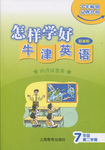|
阅读理解
The sometimes tense relationship between presidents and New York City mayors was seemingly set 30 years ago with the famous Daily News headline following President Gerald R.Ford's decision not to help the city out from a financial crisis.(“Ford to City:Drop Dead,” it read.)
But yesterday provided something of a role of the opposite:President Bush came to promote strong national economic data and to do it in the glow of a New York City economy that he said was “booming with a bond rating(债券评级)at an all-time high, and unemployment near an all-time low.”
The moment highlighted the unique relationship Mr.Bush has with New York City, to which he has been linked since the 2001 terrorist attacks, even though he is unpopular with many voters here.
And as he spoke at the Federal Hall National Memorial on Wall Street for an event held by the Association for a Better New York, he addressed an audience that included not only business leaders but also three New York City mayors-one of them a Republican, two of them Democrats.
There was Mayor Michael R.Bloomberg, a late-blooming Republican, who kept his distance from the president throughout the 2005 mayoral campaign in case the president's low poll(选举投票)ratings rub off on him.
Mr.Bloomberg seemed to receive slightly louder applause than Mr.Bush did yesterday, though, to be fair, both were warmly received and many of Mr.Bloomberg's own officials were in the audience.
But Mr.Bush did not seem to take offense either way.
“Mr.Mayor, thanks for being here, I appreciate your coming,” Mr.Bush told Mr.Bloomberg.“You're doing what people want you to do, and that is to lead this city.”
Then there was former Mayor David N.Dinkins, the liberal Democrat.“Mr.Mayor-David Dinkins, thank you for being here,” Mr.Bush said from the lectern.“Proud you're here.”
His warmest words were for Mayor Edward I.Koch, the Democrat who crossed party lines to endorse Mr.Bush in 2004.
“And it's good to see my buddy(密友), Mayor Ed Koch,” Mr.Bush said.“Mr.Mayor, thank you for coming.”
One former mayor who was not there:Rudolph W.Giuliani, the man at or near the top of many polls of possible Republican presidential contenders(竞争者), who, according to an aide, was at tending a fund-raiser out of town.
| 
 芝麻开花课程新体验系列答案
芝麻开花课程新体验系列答案 怎样学好牛津英语系列答案
怎样学好牛津英语系列答案